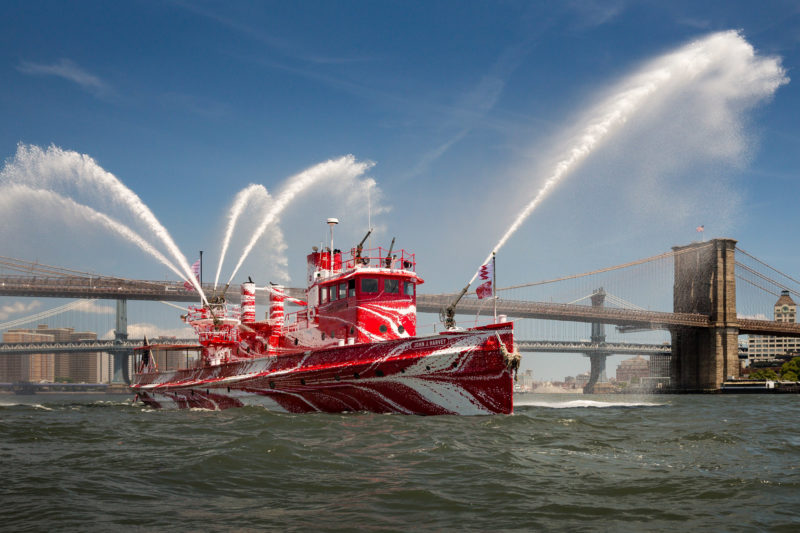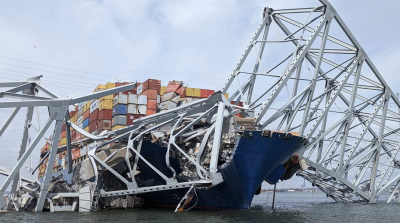The historic New York City fireboat John J. Harvey got a shipyard haul out and stunning new paint job, all part of a public art exhibit for the city waterfront.
Titled “Flow Separation,” the work by New York-based artist Tauba Auerbach commemorates the “dazzle ships” of World War I, Allied vessels painted with geometric patterns.
The 130’x28’x9’ John J. Harvey served with the Fire Department City of New York from 1931 until it retirement in 1994 and is now maintained by a non-profit group. It was back in action after the Sept. 11, 2001 terrorist attack, when its crew pumped water for 80 hours and evacuated people from lower Manhattan.

Artist Tauba Auerbach drew inspiration for her design from fluid dynamics. Courtesy Paula Cooper Gallery/Nicholas Knight photo.
For the artwork, the Harvey was put up at the Caddell Dry Dock, Staten Island, N.Y., for an exterior restoration, stripping off rust and decades of paint. In its new color scheme, the fireboat is on public display until May 12, 2019, at waterfront locations including Brooklyn Bridge Park at Pier 6, and piers 26 and 66a along Hudson River Park.
Invented by British painter Norman Wilkinson, the original naval dazzle paint schemes aimed to optically distort ship forms, to confuse German U-boat crews tracking distance, direction and speed, and make it more difficult to calculate firing solutions for their torpedoes.
“The dazzle designs were heavily indebted to both animal camouflage and avant-garde movements like Cubism, Futurism and Vorticism,” according to event sponsors at the Public Art Fund, which co-commissioned the work along with 14-18 NOW, the United Kingdom’s arts project to commemorate the centenary of World War I.
The London-based group commissioned four dazzle ships since 2014. Auerbach’s work is the first one in the U.S., and the last before Nov. 11, 2018 — Veterans’ Day in the U.S. — marking the end of the war in 1918.
The fireboat’s dazzle design “draws inspiration from fluid dynamics and the forms found in wake patterns left behind objects as they move through water,” according to organizers. “Auerbach created her design for the surface of the boat through the process of marbling paper, floating inks on a fluid bath and combing the surface to create various wake patterns before transferring them on to paper.
“The fireboat also flies a flag diagramming ‘flow separation’ — the phenomenon when areas of fluid in a wake move backwards, creating eddies. By incorporating the movement and behavior of water into the design, Auerbach references how the fireboat travels through water as well as how water moves through the belly of the vessel itself.”
At the end of the project in spring 2019 the James J. Harvey will be returned to its historic FDNY colors.





